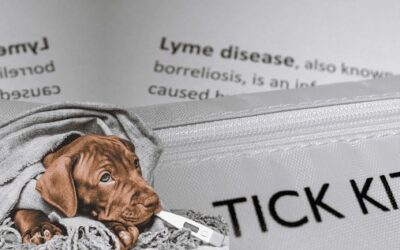Unhealthy Dog Tongue: White, Pale, Yellow, Blue & Purple

Updated October 13, 2025
Believe it or not, a dog’s tongue color can reveal much about its health. A healthy dog’s tongue should be vibrant pink. Any change in this color could indicate concern. White, blue, pale, or purple tongues can signal health issues. This guide will explore dog tongue colors and cover the reasons for any changes and their health impacts, which range from anemia to circulatory problems.
Normal Dog Tongue Color
A dog’s tongue should be a vibrant pink and a bit rougher than a human’s. This color comes from blood vessels near the surface, which allow for good oxygenation and circulation.
Some variations in tongue color can be normal, depending on the breed and individual dog. Certain breeds, like Chow Chows and Shar-Peis, may have darker or bluish tongues due to their genes.
Understanding The Unhealthy Dog Tongue Colors
Some breeds have normal tongue color variations, but significant deviations from the healthy pink hue can indicate health issues.
A white or pale tongue in dogs can cause concern, which may signify several health problems. Here are some potential causes of a white dog tongue:
- Dehydration: A severely dehydrated dog’s tongue may be pale or white. This is due to decreased blood flow to the area and can be life-threatening if untreated.
- Anemia: A deficiency in red blood cells or hemoglobin can lead to a pale or white tongue in dogs and is indicative of anemia. It can be caused by kidney disease, immune-related issues, lymphoma, or significant blood loss. Alongside a pale tongue or gums, you might notice a faster heartbeat, low energy, or even unusual behaviors like eating dirt.
- Shock: When a dog’s blood pressure drops suddenly, for example, due to injury or internal bleeding, it can reduce circulation to the tongue and gums. You may notice symptoms such as pale gums, sunken eyes, difficulty breathing, or confusion.
- Dental or Oral Health Issues: Your dog’s tongue can also change in appearance due to dental concerns. Plaque and tartar build-up may seem minor, but over time, they can lead to infections that affect not only the mouth but also the heart and other organs. White spots on the tongue could be from ulcers, infections, or even oral growths. Keeping up with regular dental checks helps protect your dog’s comfort and overall health.
- Certain medications: Some medicines, like antibiotics and chemo drugs, can temporarily whiten the tongue.
A blue or purple-tinged tongue in dogs can mean a lack of oxygen in the tissues, which is worrisome.
- Respiratory issues: Conditions like pneumonia and asthma can impair a dog’s oxygen intake.
- Heart conditions: Certain heart diseases, such as heart failure or congenital defects, can impair blood circulation.
- Toxins: Some ingested toxins can hinder oxygen transport in the body, causing a bluish discoloration of the tongue and other tissues.
- Choking or airway obstruction: Choking can prevent oxygenation, which may turn the tongue blue or purple.
Red Dog Tongue
A healthy dog’s tongue should be a vibrant pink. A red or inflamed tongue can signal health issues such as:
- An injured or inflamed tongue from chewing a hard object or from a bite
- Allergic reactions to food
- Bacterial, viral, or fungal infections in the mouth or throat
- Autoimmune disorders lupus and pemphigus
- Exposure to certain chemicals and toxins
Yellow Dog Tongue
Potential causes of a yellow tongue in dogs include:
- Jaundice: A condition caused by excessive bilirubin in the bloodstream, often associated with liver or gallbladder disease.
- Leptospirosis: A bacterial infection that can damage the liver and kidneys
Veterinarians often use a tongue color chart to diagnose health issues, similar to this chart from Pawsafe, which shows tongue colors and their meanings.
When To Seek Veterinary Help For Abnormal Dog Tongue Colors
Some tongue color changes may be temporary or minor. However, it is recommended to seek veterinary help if you notice any significant or lasting changes.
- Sudden or drastic color changes
- Abnormal tongue color that lasts longer than two days.
- Accompanying symptoms like lethargy, loss of appetite, vomiting, or trouble breathing.
- Injury to your dog’s tongue or mouth
How Can Pet Insurance Help If Your Dog Needs Treatment?
Pet insurance can be a valuable tool in managing the costs of treating a dog’s veterinary expenses. By having a pet insurance policy in place, you can have peace of mind knowing that you can provide medical care for your furry companion without worrying about the financial burden. Pet insurance can help cover the costs of veterinary consultations, diagnostic tests, medications, and even specialized treatments if required.
What Does Odie Pet Insurance Cover?
Pet insurance covers various veterinary expenses, providing financial protection and peace of mind for pet owners. Here are the details of the coverage options offered by Odie Pet Insurance:
Illness & Injury Plan
The Illness & Injury Plan is an all-inclusive insurance plan designed to cover a wide range of medical needs for your pet. This plan includes comprehensive coverage for various illnesses, injuries, and veterinary services. Some of the covered items include:
- Veterinary exams and consultations
- Diagnostics (e.g., X-rays, lab tests)
- Prescribed medications
- Surgeries and hospitalization
- Rehabilitation, acupuncture, or chiropractic treatments
- Medically necessary supplies
- Euthanasia and cremation
The Wellness Plan
The Wellness Plan is a monthly membership that focuses on preventive care and covers routine veterinary services.
- Provides reimbursements for routine care items, such as wellness visits (exams and vaccines), testing and parasite prevention, dental cleanings and at-home dental care, vitamins, supplements, and more.
- Through Odie’s partnership with Petivity, a leader in smart pet products and proactive care, Wellness Plan members can also receive reimbursements for Petivity devices and health kits, as well as eligible Purina food and supplements.
- Total reimbursement up to $700 per year.
FAQs
What color should a healthy dog’s tongue be?
Vibrant pink is normal. Chow Chows and Shar-Peis naturally have darker or bluish tongues due to genetics.
What do white, pale, blue, or purple tongues mean?
- White/Pale: Dehydration, anemia, shock, or medication side effects
- Blue/Purple: Lack of oxygen from respiratory issues, heart conditions, toxins, or choking
Both require immediate vet attention (unless natural to the breed).
What causes red or yellow tongues?
- Red: Overheating, tongue injury, allergies, infections, or toxin exposure
- Yellow: Jaundice (liver/gallbladder disease) or leptospirosis
Yellow tongues are particularly serious and need prompt evaluation.
When should I seek veterinary help?
Contact your vet immediately for sudden color changes, abnormal colors lasting over two days, blue/purple tongues, or accompanying symptoms like lethargy, vomiting, or breathing difficulties.
Can dental problems affect tongue appearance?
Yes. Plaque buildup can cause infections affecting the mouth and other organs. White spots may indicate ulcers, infections, or oral growths. Regular dental care is essential.
How can pet insurance help?
Odie Pet Insurance covers vet consultations, diagnostics, medications, surgeries, and treatments for conditions affecting tongue color, providing financial protection for necessary medical care.



